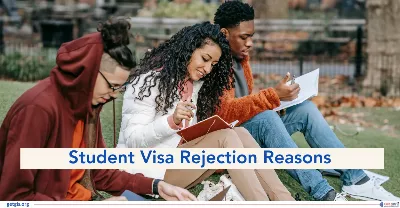Best Way to Get PR in Australia for Indians in 2025
Updated On
-
Copy link
Explore the best ways to get PR in Australia in 2025. From pathways to Australia PR benefits for Indians explore the complete details in this comprehensive guide.
Limited-time offer : Access a free 10-Day IELTS study plan curated for you

Table of Contents
In the last financial year, Australia welcomed 446,000 net overseas migrants surpassing government's projections by 51,000. This surge underscores the nation's enduring appeal to individuals seeking Australia PR. Notably, the Australian government has set a target of 185,000 places for the 2024 - 2025 Permanent Migration Program with 70% (i.e. 132,200 places) dedicated to skilled migrants.
As competition intensifies, understanding the best way to get PR in Australia becomes crucial. In this comprehensive guide, we will navigate you through the Step By Step Australia PR Process from India in 2025 covering the best ways to get permanent residency in Australia.
Best Ways to Get PR in Australia for Indians
Migrating to Australia involves navigating a range of visa options designated to different purposes and eligibility criteria. Here are some of the most popular Australia visa types for individuals considering immigration to Australia:
1. Employer-Sponsored Visa
An employer-sponsored visa allows skilled employees to reside and work in Australia for a period of time that varies based on the visa’s subclass. These visas are usually sponsored by an Australian employer who can establish a real need for the applicant's skills.
There are various types of employer-sponsored visas in Australia, such as:
- Temporary Skill Shortage Visa (Subclass 482)
- Employer Nomination Scheme (Subclass 186)
- Skilled Employer Sponsored Visa (Subclass 494)
- Training Visa (Subclass 407)
- Temporary Work Visa (Subclass 457)
Want to know how to get your Employer to sponsor your work visa in Australia? Explore the comprehensive guide for complete details
2. Skilled Visa
- Skilled Independent Visa (Subclass 189): This Skilled Independent Visa Subclass 189 is for skilled workers who are not sponsored by an employer, state, or family member. It is a points-based visa where you need to meet the eligibility criteria and score a minimum number of points to apply.
- Skilled Nominated Visa (Subclass 190): The Skilled Nominated Visa Subclass 190 is for individuals nominated by an Australian state or territory government. You must have skills and qualifications that are in demand in that particular state or territory.
- Skilled Work Regional (Provisional) Visa (Subclass 491): This is a points-based visa for skilled workers who want to live and work in a designated regional area in Australia. The Subclass 491 visa requires sponsorship by a state or territory government or an eligible family member living in a designated area.
3. Working Holiday Visa
The Working Holiday Visa offers a unique opportunity for young individuals to experience life in Australia while engaging in short-term employment. This visa allows eligible candidates, usually aged 18 to 30, to work and travel in Australia for up to a year.
While the Working Holiday Visa doesn't directly lead to Permanent Residency (PR), it can be a stepping stone toward exploring potential pathways for long-term settlement. The experiences, networks, and insights gained during your time in Australia might spark interest in other visas that offer pathways to PR.
4. Business Visa
The Business Visa Australia comprises various subclasses, each contributing to specific business-related activities and aspirations. These subclasses offer pathways for entrepreneurs, investors, and business owners to engage in economic endeavours and potentially secure Permanent Residency.
Here's a brief list of some key subclasses under the Business visa pathway:
- Business Innovation and Investment (Subclass 188): The Subclass 188 Business Innovation and Investment (Provisional) visa allows you to own and run a business in Australia, engage in business and investment activity in Australia, or engage in an entrepreneurial activity in Australia.
- Business Innovation and Investment (Subclass 888): It is a PR visa for those who possess a four-year provisional subclass 188 visa and want to continue to own and run a business or invest in an Australian state or territory.
- Investor Retirement Visa (Subclass 405): For retirees seeking to invest and live in Australia during retirement.
- Business Talent (Subclass 132): Allows an individual to establish their business or lets them improve an already established business in Australia.
- Significant Investor Visa (Subclass 188C and 888C): With this visa, you are eligible to carry out investment activities in Australia
- Premium Investor Visa (Subclass 188D and 888D): As this visa applicant, you must make an investment of at least AUD 15 million in a “premium investment” prior to the granting of the visa
Also Explore: Australia Business Visa from India (Subclass 600)
5. Medical Visa (Subclass 602)
The Medical Visa in Australia serves a specific purpose - facilitating access to necessary medical treatment that isn't available in the applicant's home country. This temporary visa allows individuals to travel to Australia for medical procedures, consultations, or therapies that can significantly impact their well-being.
While the Medical Visa is crucial for health-related needs, it's essential to note that it isn't a pathway to an Australian PR. The visa is granted based on the duration of the medical treatment and doesn't grant work rights.
6. Student Visa (Subclass 500)
The Student Visa in Australia provides international students with access to high-quality education as well as the possibility of eventual permanent residency in Australia. While the Australia Student Visa process does not provide a straight road to PR, it can be used as a stepping stone.
Upon completing a relevant course, students might be eligible for a Temporary Graduate Visa (Subclass 485), which provides valuable work experience in Australia and opens doors to further PR options.
7. Investor Retirement visa (subclass 405)
This visa provides an avenue for self-funded retirees to enjoy their retirement years in the country. While not a direct pathway to a PR, this visa allows eligible retirees to stay in Australia for an extended period.
It's designed for those who have no dependents and are looking to invest in the country. The visa requires meeting financial and health requirements, and it enables retirees to live a comfortable lifestyle while contributing to the Australian economy through their investments.
Explore the indepth details about Australia Visa Requirements, process and fees in this comprehensive guide.
8. Partner/Family Visa
To be eligible for this visa, the applicant and his or her spouse or de facto partner must be in a genuine relationship. Spouse visa Australia allows the spouse or partner of an Australian citizen, Australian permanent resident or eligible New Zealand citizen, to live in Australia permanently.
Australia PR Benefits for Indians
So far you have successfully navigated through the list of best ways to get Australia PR, let us further explore the benefits of Australia PR for Indians. These include:
- A PR visa holder has the option of sponsoring a family member's visa, which can be temporary or permanent.
- A PR visa holder is also eligible for various social security payment benefits and the Australian Government's health insurance.
- A PR visa holder has total freedom to pursue any educational path he or she chooses.
- As a PR visa holder, you can live and work in Australia permanently and travel freely within and outside of the country.
- A person with a PR visa has the legal right to work for any employer.
- A PR visa holder may also travel to New Zealand or apply for a new visa.
Immigration to Australia? GetGIS Has Got Your Covered
Securing Australia PR is a life changing opportunity but navigating the process could be complex if not done under right guidance. With the right pathway, be it skilled migration, employer sponsorship or regional visas, you can make your PR dream a reality.
Given the evolving Australian immigration policies and competitive landscape, expert guidance can significantly improve your chances. GetGIS professional assistance ensures your streamline Australia PR journey from eligibility assessment to visa application.
Ready to take the next step: connect with our Australia PR immigration assistance team today and turn your permanent residency dream into reality. Book your free consultation
Articles You Might Be Interested in
- Skills In Demand (Subclass 482) Visa From India (2025)
- Insights About Australian Medical Check for Visa
- How to Get PR in Australia After Study in 2025?
- What is the Difference between PR and Citizenship in Australia?
- Australia PR Processing Time: How Many Years to Get PR in Australia in 2025?
- List of Australia PR Requirements for Indians
Limited-time offer : Access a free 10-Day IELTS study plan curated for you

Frequently Asked Questions
What is the General Skilled Migration program?
What is the current PR processing time in Australia?
Can I reside as an Australian citizen or PR in one of Australia's External Territories?
Can I stay in Australia indefinitely on a Bridging Visa?
Can I apply for multiple visas at the same time?





